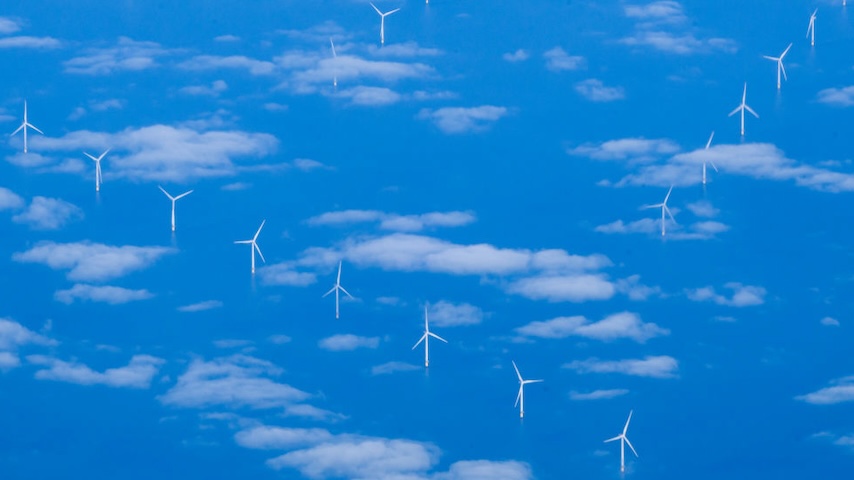Another Big Offshore Wind Project Gets Started in U.S. Waters
Photo by Leon Neal/Getty Images
The late bloomer that is the U.S. offshore wind power industry has gained a new entrant. Revolution Wind, a major offshore project sited south of Rhode Island and about halfway between the eastern tip of Long Island and the western edge of Martha’s Vineyard, has successfully installed its first massive turbine.
“Revolution Wind is going to have a major impact in the Northeast when it comes to delivering clean energy,” said Connecticut governor Ned Lamont, in a press release. The project, developed by the partnership of Danish energy giant Ørsted and New England-based Eversource, will deliver just over 700 megawatts of power to Rhode Island and Connecticut once it is complete, enough to power around 350,000 homes.
The turbine is just the first of 65 11-megawatt behemoths that will complete the project; the companies say it will be fully operational by 2026.
Of course, companies saying things like that don’t have a great track record when it comes to offshore wind power in this country. Even while Europe, China, and elsewhere have built out massive offshore industries, this country has lagged far behind, with decades-long delays and eventual cancelations plaguing the industry’s initial forays. Things have seemed to turn around in recent years though — South Fork Wind, from the same two companies as Revolution, is now operational, and its 12 turbines are apparently enough to qualify as “utility scale.”
Vineyard Wind is a much bigger project, slated to bring 800 megawatts of power to Massachusetts, and is partially operational now. It seemed the industry’s biggest success story to date — that is, until July, when one of the enormous turbine blades “failed,” meaning it broke into a bunch of little pieces, some of which washed up in dangerous fashion on Nantucket beaches. Not a great look, if we’re being honest.
Elsewhere along the East Coast, the offshore wind industry continues its stop-and-start progress. Several major projects in New Jersey have been abandoned, ostensibly due to their economics but likely at least in part to the well-funded astroturfed opposition that burbles up out of the primordial goo every time someone tries to replace fossil fuels; another New Jersey project has only just requested a pause from state agencies, due to, oddly, an apparent lack of a reliable supplier for the turbines. Meanwhile the Biden administration has poured money and effort into jump-starting things, with announcements earlier this year that the government will hold at least a dozen offshore auctions for more wind development through 2028.
The Revolution Wind turbine is more symbolic than anything else, with plenty more construction on the way, but symbols seem pretty important at this point. Rhode Island and Connecticut politicians are backing the project hard, with U.S. Senators Sheldon Whitehouse and Richard Blumenthal calling the first turbine a “major” and “momentous” milestone while hyping the hundreds of jobs the project is creating.
Meanwhile, China has taken the global lead in installing huge amounts of offshore wind power, and the U.K. continues to forge ahead as well. On Tuesday, an auction in the U.K. set the stage for nine new wind farms, including what will be the two largest offshore wind projects in Europe; in total the projects will generate almost ten gigawatts of power, enough to power 11 million homes.
New turbines off the Rhode Island coast are a reasonable sign of progress, but the U.S. still has a lot of catching up to do.